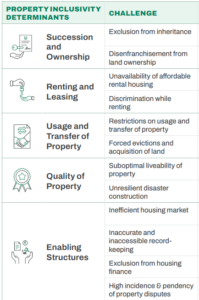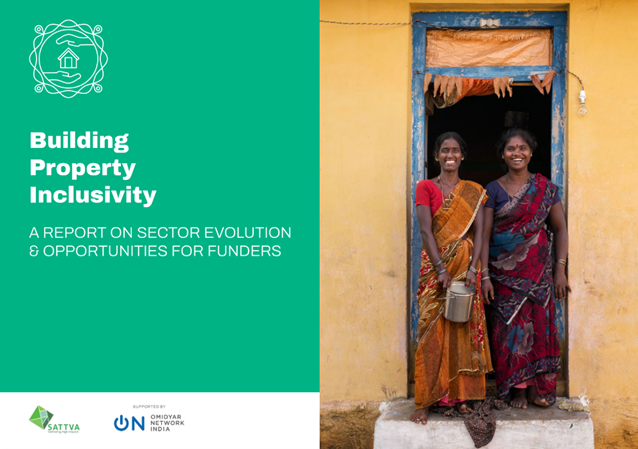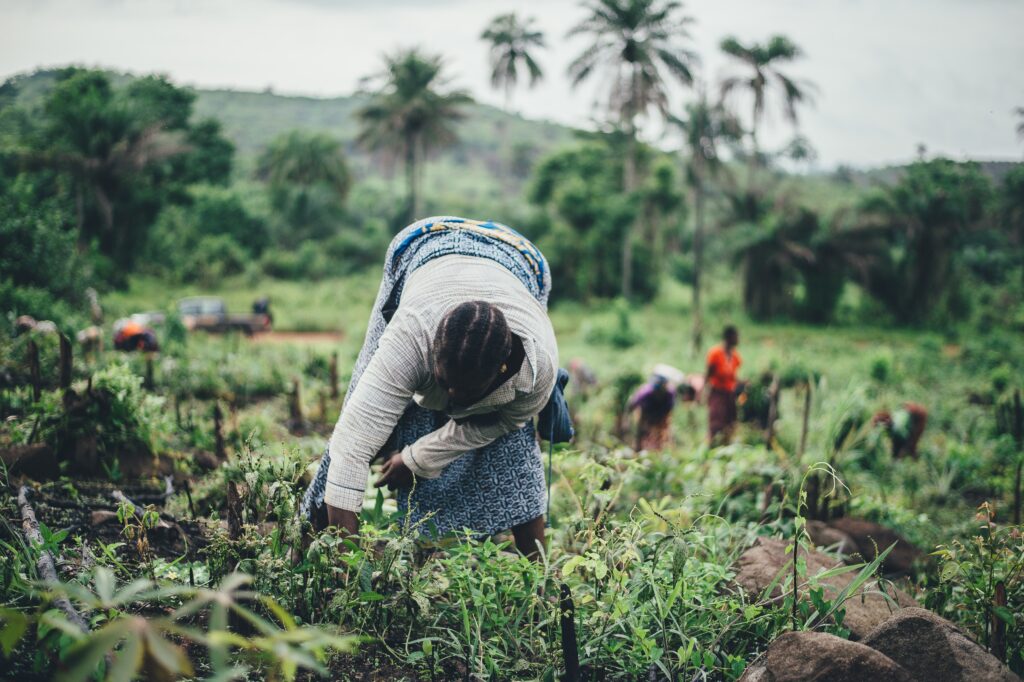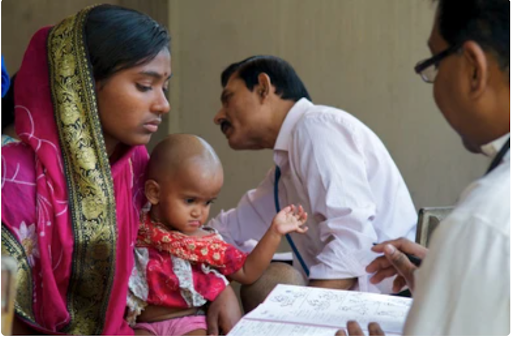A report on Sector Evolution and Opportunities for Funders
In India, property – particularly land and housing – has the potential to catalyse socioeconomic mobility, improve development outcomes across interrelated areas (financial inclusion, gender empowerment, healthcare, migration and urban development) and restore autonomy over resources for marginalised communities.
However, the proportion of rural households in India that were marginal or landless rose from ~80% in 2002 to ~85% in 2018 (Ministry of Statistics and Programme Implementation, GOI, 2019) and according to the Ministry of Housing and Urban Affairs ( MoHUA), the urban housing shortage across India was at ~19 million houses between 2012-20173. Moreover, discrimination against gender and other minorities remains predominant in rental markets. Systemic issues such as misaligned incentives among market and state actors, an overburdened land administration system, and varying legislative frameworks across geographies make it difficult for marginalised and vulnerable communities to own, inherit, or productively leverage different kinds of immovable property..
CLIENT BRIEF
Investing in an enabling ecosystem that is equipped to unlock the aforementioned opportunities for every Indian has been at the heart of Omidyar Network India’s (ONI) Property Inclusivity portfolio for over a decade. The organisation partners with bold and purpose-driven entrepreneurs who are working to improve the lives of India’s Next Half Billion.
The project, therefore, aimed to study India’s property inclusivity landscape, focusing on the evolution, areas and enablers of progress, and opportunities in the sector. In addition to this evolution mapping, the project also aspired to retrospectively assess the client’s impact in this landscape and on the different actors involved, including social startups, non-profits, think tanks, research organisations, and so on.
SATTVA’S APPROACH
Sattva adopted an exploratory and qualitative approach to define the property inclusivity landscape, track its evolution between 2011 and 2021, and measure the client’s impact on the landscape and its actors.
The evolution of the landscape was examined through a five-stage framework – ‘Latent’, ‘Nascent’, ‘Emerging’, ‘Mainstream’, and ‘Transformed’ (LNEMT); with each stage indicating the degree of an ecosystem’s maturity in confronting systemic issues.
![]()
To document the complexity of the landscape, interviews were conducted with sector-level experts (from the government, civil society and private sector) and the client’s grantees. Variations across states and in the experiences of different population groups were examined by triangulating data from resources such as existing landscape studies, private databases, news articles, and white papers.
People and Expertise
The team’s extensive experience in research was integral in designing the appropriate frameworks and capturing the relevant information to identify trends and insights about the landscape’s evolution and the client’s impact.
Rathish Balakrishnan, Co-founder and Managing Partner brought his expertise to the engagement as an advisor, while the project was led by Senior Consultant – Lekhya Reddy. She was supported by Consultants, Abhineet Nayyar and Sadhana Sanjay, who are adept at research and data analysis and also carry knowledge in the areas of financial inclusion, livelihoods and the laws and legislation of India’s land and property landscape.
Beneficiary Profile:
- Geography covered: The project focused on the client’s work across all states and UTs in India
- Relevant demographic markers – Property access, ownership and security are strongly determined by the social and economic context of the individual/community. Hence five socio-economic indicators – gender, caste, religion, geography, and economic standing – were incorporated to capture the myriad challenges experienced in accessing and leveraging property.
Technical details of how the project was executed:
-
-
- Firstly, Sattva developed the sector maturity LNEMT framework that tracked the ecosystem’s response to different challenges in the property inclusivity landscape
- Primary and secondary information was then leveraged to track the landscape across the different stages of this maturity framework, and subsequently map all the challenges across them
- Parallelly, a systems’ impact mapping framework was also developed and used to track the effect of the client’s investments on the landscape and on the key ecosystem actors
- An expert-led steering committee validated the project’s findings multiple times during its course and provided critical feedback at key junctures.
-
2. Duration and footprint – The team conducted online conversations with 45+ experts over 11 months and the final report was released in March 2023.
KEY TAKEAWAYS

- Currently, property inclusivity is at the “emerging” stage, indicating policy-level progress, widespread recognition of challenges and the emergence of early solutions (state schemes, legislations, on-ground community building). However, this stage is also characterised by high geography and community-level variances, with some vulnerable communities and geographies excluded from the ambit of existing solutions. Implementation gaps, limited last-mile access to solutions and lack of community capacity have led to siloed impact.
- Advancing the sector from “emerging” to “mainstream” requires addressing 12 key challenges – caused by interlocking factors including entrenched social norms, limitations in individual and state capacity, infrastructural constraints, a stagnant policy landscape and misaligned incentives.
-
These challenges are often more significant for some vulnerable groups – women, farmers, transgender people, and tribal communities – than others, which underscores the need to study the sector by centering communities to enable an inclusive, equitable, and sustainable property landscape going forward
- Moving the sector from “emerging” to “mainstream” will entail – Scaling feasible, sustainable solutions through long-term incubatory capital, tailoring last-mile solutions to reach vulnerable communities and geographies, and building a self-sustaining community of actors with diverse and long-term funding support
- Building a shared agenda with funders from adjacent sectors and across multiple stakeholder groups will be key in enabling cross-sectoral outcomes
PROJECT DELIVERABLES
The project culminated in a research report which was launched at a closed-door roundtable in Bangalore. There were over 30 leaders from property technology startups, civil society organisations, research institutes, think tanks, and a range of funding organisations that focus on areas such as gender, livelihood, and healthcare at the launch event. In addition to this, Sattva prepared a supplementary report, which carried specific insights for the client’s work in the sector.
IMPACT
The project led to a ‘State of the Sector’ report for the property inclusivity landscape and provided the client with key learnings and recommendations for their future investment strategy in this sector.
HIGHLIGHTS
Based on the project’s learnings and the insights from the closed-door roundtable, Sattva and ONI are currently researching innovative and collaborative funding opportunities to accelerate the progress of the landscape in the coming years.




